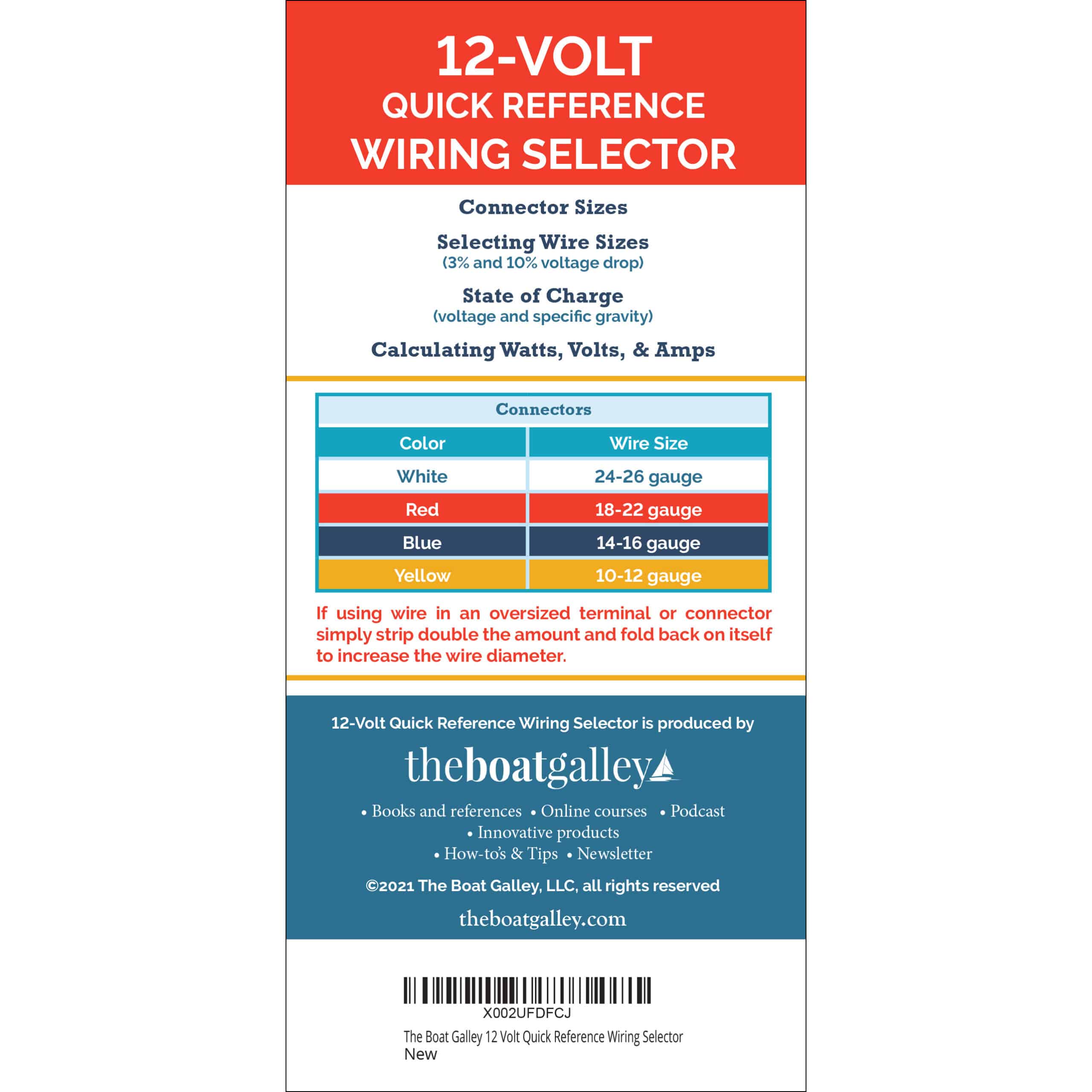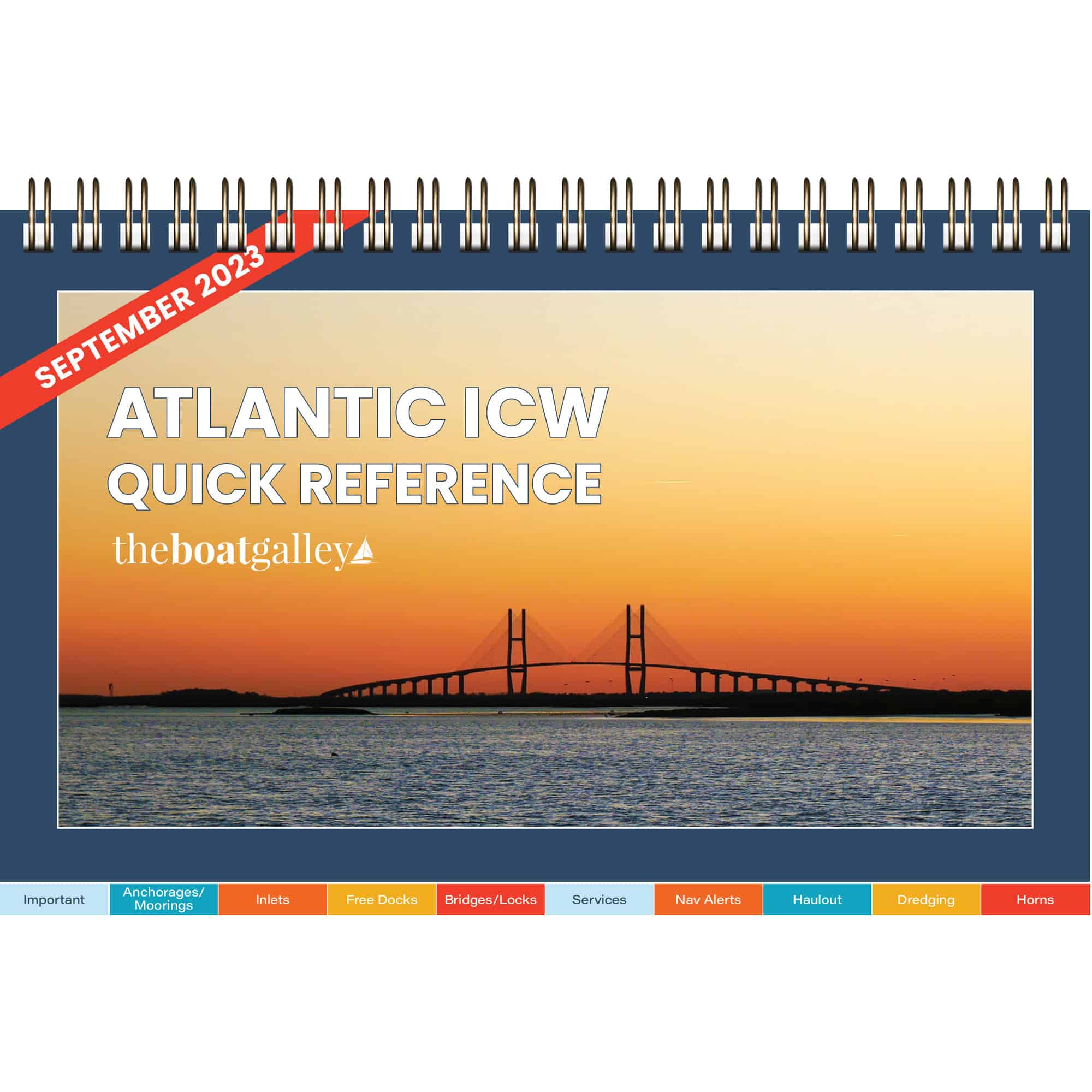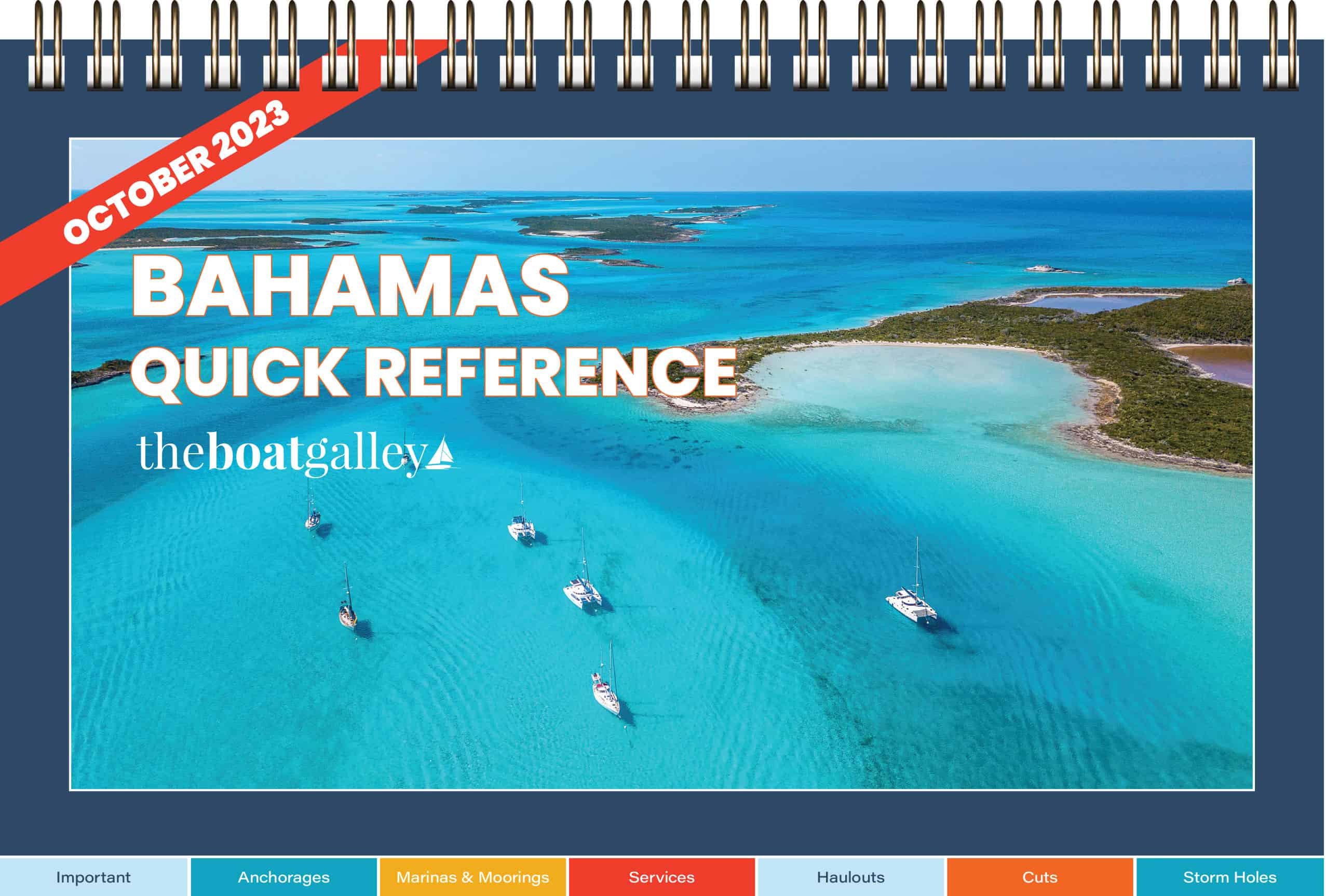
When you’re dropping the anchor, you want to know how much rode you’re putting out to determine if you’ve got enough scope. To know that, you have to mark your anchor chain.
People have come up with all sorts of systems for marking chain (or rope). The most popular two are using cable ties or paint. You can also buy little plastic pieces that fit into links in the chain (see them on Amazon).
Color Coding
With any system to mark anchor chain, you come up with a color scheme (in the US, red-white-blue is popular) and a distance apart for the markings. On our previous boat, 300 feet of chain was marked every 50 feet.
- First red = 50 feet
- First white = 100
- First blue = 150
- Second red = 200
- Second white = 250
- Second blue = 300
Ways to Mark Anchor Chain
The problem with cable ties is that they get chewed up by the windlass and the bottom, and fall off over time. You can put on multiples so that there will still be another one there for you to see, but that ignores the other problem with cable ties: all those bits of broken plastic in the water. The plastic pieces that snap into chain links are better, but still can pop out and end up as plastic trash in the water.
Individually, they’re not large. But added to the rest of the plastic trash in the oceans? No thanks. I hope others will move away from using cable ties (or other plastic markers) and switch to paint.
How to Paint Galvanized Anchor Chain
To paint the chain, start by laying it out and determining where you’re going to paint. It’s usually easiest to zig-zag it back and forth at whatever interval you’ve decided upon.
IMPORTANT: Paint will appear to adhere to galvanizing when first applied, but actually flakes off easily. Our friend Greg Delezynski told us the secret to getting it to adhere well: vinegar!
The vinegar will etch the galvanizing so that paint can adhere. Just pour it over the sections of chain that you intend to paint and let dry, then paint. Greg uses either white or cider vinegar.

Greg’s other tip is to use yellow paint for the “white” in the red-white-blue color scheme. White can be hard to spot if you have new galvanized chain — it will blend right in with the galvanizing. Yellow shows up much better.
Read Next

Carolyn Shearlock has lived aboard full-time for 17 years, splitting her time between a Tayana 37 monohull and a Gemini 105 catamaran. She’s cruised over 14,000 miles, from Pacific Mexico and Central America to Florida and the Bahamas, gaining firsthand experience with the joys and challenges of life on the water.
Through The Boat Galley, Carolyn has helped thousands of people explore, prepare for, and enjoy life afloat. She shares her expertise as an instructor at Cruisers University, in leading boating publications, and through her bestselling book, The Boat Galley Cookbook. She is passionate about helping others embark on their liveaboard journey—making life on the water simpler, safer, and more enjoyable.
Your VHF can do so much! Learn how to use ALL its features for just $39:












Steven Williston says
That’s a great idea and a good alternative to those cable ties that either break off or slice the hands as you haul the chain in. An alternative that came with our S/V Shalayla were cloth ties that had length markings on them. They didn’t last forever but while they were still legible they worked well. Sadly I have no photos of them.
Sharon Thompson Dunsworth says
We painted our chain but are now seeing paint flakes as we pull up the chain..maybe need to find better paint.
Donald Rushton says
Primer paint for galvanized metal is yellow. Combined with the vinegar etching it should stick well. .I don’t know its durability in underwater, but I’m going to try it this year.
Dave Skolnick (S/V Auspicious) says
I’ve painted a lot of chain. I still like wire ties better. They don’t get chewed up in the windlass if you loop them between links instead of around the side of a link. YMMV.
Frances Liz Fernandez says
This was a fun project for us.
Jim Shell says
I use nylon webbing strap (recycled from old life jackets and cushions) sewn as little flags onto the chain and nylon rode. I use a similar length marking system. The webbing is tough and does not jam the windlass. This is a good use for odd pieces of left over or old webbing. An advantage to the webbing is you can feel it on a dark night when you are slipping the chain/rode through your hand as you pull the rode form the locker onto the deck before deployment.
Rory Finneren says
Skip Novak uses paint so that’s what I’ll plan on using 🙂
Alexis Lynn Branson Evans says
The secret is scrubbing and priming before painting…..ours lasted very well
Robert Sayles says
I’ve used the same plastic ties since 2005, paint made a mess.
Becky Croston says
We painted sections of our 400 ft. of chain this summer–wow, what a taxing job! The scary part was it wanting to slide off the dock as we zig-zagged it on the dock in front and to the side of our boat…
Todd Monforte says
Seems likely that paint chips won’t be any healthier than bits of plastic in the ocean…
Ron Newton says
I just count of seconds while powering down, 1 min = 90′
Carolyn Goodlander says
Sorry, you Cannot see paint on a muddy anchor chain, bit plastic ties stick out and are visible.
Dennis Fria says
My wash down pump inspires I never bring stinky bottom mud inside MY boat!
Little Latitudes says
What paint do you recommend? And, would you spray maybe 5 ft. of chain for each color?
Thank you!
Carolyn Shearlock says
Any exterior spray paint works well. A foot or two is usually sufficient.
little latitudes says
Thank you, Carolyn 🙂
Gord Wedman says
I sprayed 5 feet on either side of the actual measurement point. It has held up well these past 5 years. My chain was new when I painted it and I do not recall cleaning it in any way.
A friend just uses lengths of old spinnaker cloth tied onto links.
little latitudes says
Thank you, Gord.